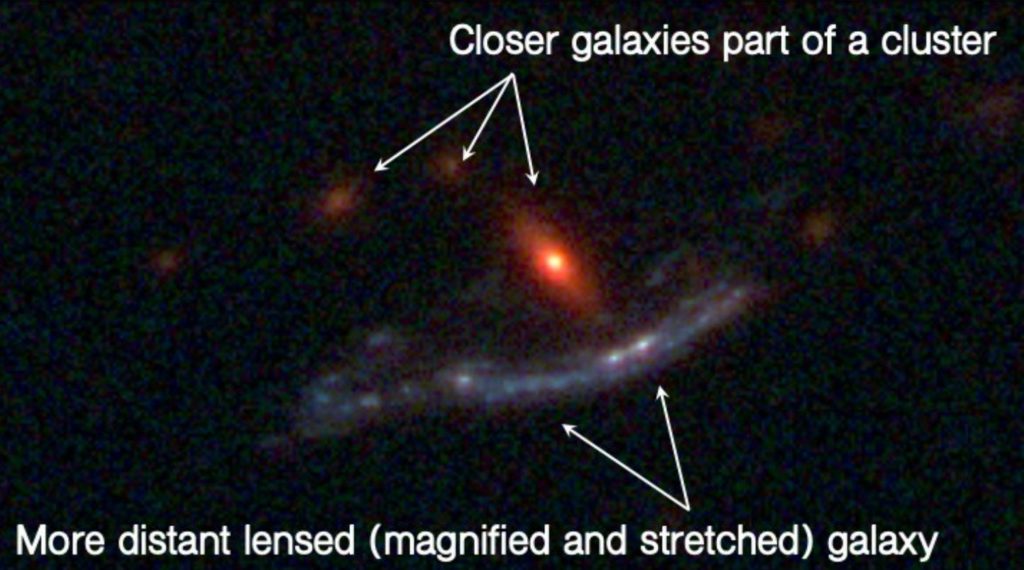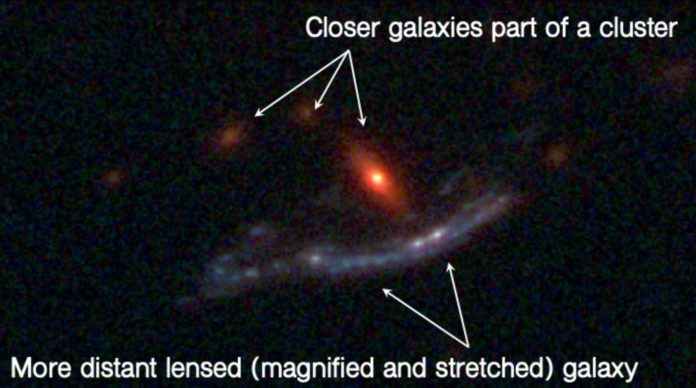Using a novel new technology and a little help from nature, researchers from the Swinburne University of Technology have obtained the first in-depth image of the vast gas clouds that serve as galaxy nurseries.
Following the big bang 13.8 billion years ago, the early cosmos was filled with vast clouds of neutral diffuse gas known as Damped Lyman-systems-α, or DLAs.
The gasses within these DLAs slowly condensed to fuel the development of stars and galaxies, serving as galactic nurseries. They can still be seen now, but it’s difficult.
According to Rongmon Bordoloi, corresponding author of the research, “DLAs are a key to understanding how galaxies form in the universe, but they are typically difficult to observe since the clouds are too diffuse and don’t emit any light themselves.”

Currently, astrophysicists use quasars as “backlight” to find DLA clouds. Quasars are supermassive black holes that emit light. While this method allows researchers to pinpoint DLA locations, the quasars’ light only functions as small spears through a huge cloud, making it difficult to determine their whole size and mass.
Bordoloi and John O’Meara, chief scientist at the W.M. Keck Observatory in Kamuela, Hawaii, devised a solution by observing two DLAs – and the host galaxies within – that formed around 11 billion years ago, not long after the big bang, using a gravitationally lensed galaxy and integral field spectroscopy.
“Gravitationally lensed galaxies refers to galaxies that appear stretched and brightened,” adds Bordoloi. “This is because there is a gravitationally massive structure in front of the galaxy that bends the light coming from it as it travels toward us. So we end up looking at an extended version of the object – it’s like using a cosmic telescope that increases magnification and gives us better visualization.
“The advantage to this is twofold: One, the background object is extended across the sky and bright, so it is easy to take spectrum readings on different parts of the object. Two, because lensing extends the object, you can probe very small scales. For example, if the object is one light year across, we can study small bits in very high fidelity.”
Astrophysicists may “see” materials in deep space that aren’t visible to the naked eye, such as hazy gaseous DLAs and the prospective galaxies within them, using spectrum readings. Gathering the readings is usually a time-consuming and tedious task. The scientists overcame this problem by using the Keck Cosmic Web Imager to perform integral field spectroscopy.
Integral field spectroscopy allowed the researchers to collect spectra for each and every pixel in the region of the sky they were interested in, making spectroscopy of a large object in the sky incredibly efficient. The team was able to map out the diffuse DLA gas in the sky with high fidelity using this invention in combination with the stretched and brightened gravitationally lensed galaxy. Researchers were able to identify not only the size of the two DLAs, but also that they both included host galaxies, using this method.
“I’ve waited most of my career for this combination: a telescope and instrument powerful enough, and nature giving us a bit of lucky alignments to study not one but two DLAs in a rich new way,” says O’Meara. “It’s great to see the science come to fruition.”
By the way, the DLAs are massive. They’re more than two-thirds the size of the Milky Way galaxy today, with diameters bigger than 17.4 kiloparsecs. A typical galaxy 13 billion years ago would have had a diameter of less than 5 kiloparsecs. A parsec is 3.26 light years, and a kiloparsec is 1,000 parsecs, therefore light would travel across each DLA in around 56,723 years.
“But to me, the most amazing thing about the DLAs we observed is that they aren’t unique – they seem to have similarities in structure, host galaxies were detected in both, and their masses indicate that they contain enough fuel for the next generation of star formation,” Bordoloi adds. “With this new technology at our disposal, we are going to be able to dig deeper into how stars formed in the early universe.”
Source: 10.1038/s41586-022-04616-1
Image Credit: Getty
You were reading: Breathtaking Image of Gas Clouds Reveals Inner Working of Two Deep-Space Galaxies
